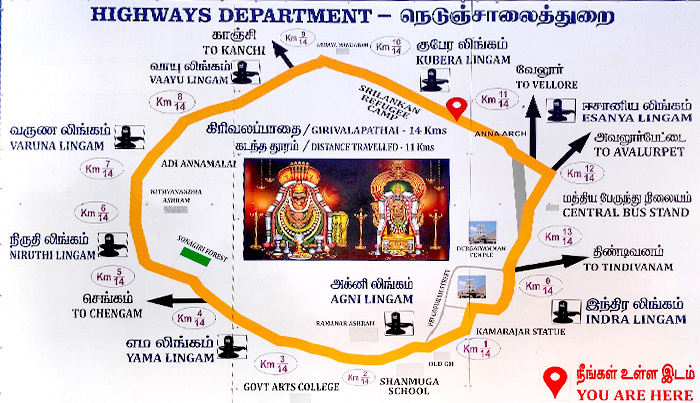Exploring Spiritual Magnificence: A Comprehensive Guide to Tiruvannamalai Temple Timings
Tiruvannamalai, a town nestled in the lap of spirituality in the southern state of Tamil Nadu, India, is home to one of the most revered temples in Hinduism – the Arunachaleswarar Temple. Dedicated to Lord Shiva, this architectural marvel draws devotees and tourists alike with its grandeur, history, and religious significance. Central to planning your visit is understanding the temple’s timings, ensuring you make the most of your spiritual journey. Let’s delve into the intricate details of Tiruvannamalai Temple timings, offering insights into the best times to visit, rituals, and experiences awaiting pilgrims.
Understanding the Significance of Tiruvannamalai Temple: Before we delve into the timings, it’s essential to grasp the spiritual and historical significance of the Arunachaleswarar Temple. Legend has it that the temple represents the element of fire (Agni) and is one of the Pancha Bhoota Stalas, where Lord Shiva is worshipped as the embodiment of fire. Tiruvannamalai is also renowned for being the place where several saints and sages, including Ramana Maharshi, attained enlightenment. Such divine energy permeates the temple precincts, attracting seekers from all corners of the globe.
Temple Timings Overview: The Arunachaleswarar Temple operates on a schedule that aligns with the traditional Hindu rituals, ensuring devotees have ample opportunities to pay their respects to the deity. While the temple remains open throughout the day, specific timings dictate the various rituals and darshan (viewing of the deity) opportunities.
1. Morning Timings: The day at Tiruvannamalai Temple commences with the Mangala Aarti, an auspicious ritual conducted before dawn to awaken the deity. Devotees throng the temple premises during this time to witness the divine spectacle of the deity adorned with fresh flowers and illuminated by lamps. The Mangala Aarti sets the tone for the day’s spiritual endeavors, infusing devotees with a sense of reverence and devotion. Following the Mangala Aarti, the temple doors open for devotees to offer their prayers and perform rituals until midday.
2. Afternoon Break: Post the morning rituals, the temple observes a brief closure during the afternoon hours, allowing the priests and staff to prepare for the subsequent ceremonies. This break provides visitors with an opportunity to explore the surrounding areas, partake in local cuisine, or simply rejuvenate before returning for the evening rituals.
3. Evening Timings: As dusk descends, the temple comes alive with the resonant chants of mantras and the melodious sounds of traditional instruments. The evening rituals commence with the Pradosha Puja, a significant worship dedicated to Lord Shiva, conducted during the twilight hours. Devotees gather in large numbers to participate in this sacred observance, seeking blessings and spiritual upliftment.
4. Night Timings: The temple remains open until late into the night, allowing devotees to engage in nocturnal worship and meditation. The serene ambiance of the temple under the starlit sky offers a unique spiritual experience, evoking a sense of tranquility and introspection. Many pilgrims choose to spend the night within the temple premises, immersing themselves in continuous prayers and contemplation.
Special Occasions and Festivals: In addition to its daily rituals, the Arunachaleswarar Temple hosts several festivals and special occasions throughout the year, attracting devotees in large numbers. From the grand celebrations of Maha Shivaratri to the vibrant festivities of Karthigai Deepam, each event adds a layer of splendor and fervor to the temple’s atmosphere. During these times, the temple timings may vary to accommodate the influx of pilgrims and the elaborate ceremonies.
Tips for Visitors:
- Plan your visit in advance, considering the temple timings and any special events or festivals.
- Dress modestly and adhere to the temple’s dress code to show respect for the sacredness of the site.
- Arrive early to avoid long queues and crowds, especially during peak pilgrimage seasons.
- Take time to explore the temple’s architecture, sculptures, and inscriptions, each bearing testimony to its rich heritage.
Conclusion: Tiruvannamalai Temple, with its rich history, profound spirituality, and architectural splendor, stands as a beacon of devotion and enlightenment. Understanding the intricacies of its timings allows pilgrims and visitors to immerse themselves fully in the divine experience it offers. Whether you seek solace, spiritual awakening, or simply wish to witness the majesty of Hindu culture, a visit to Tiruvannamalai Temple promises to be a journey of a lifetime, leaving an indelible mark on your soul.






